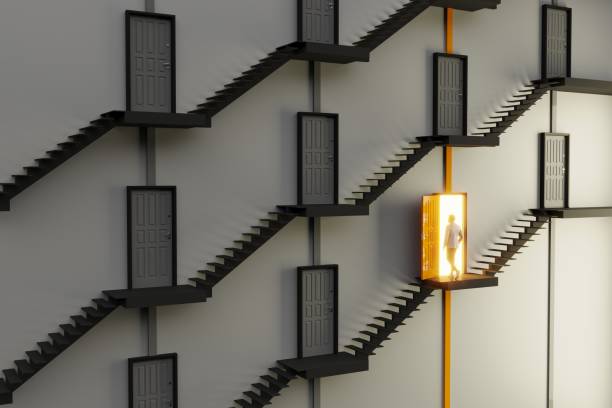Front Door Replacement in the U.S.: What to Know in 2025
Replacing a front door is one of the most impactful home improvement projects homeowners can undertake. Beyond enhancing curb appeal, a new front door improves energy efficiency, security, and overall property value. As 2025 approaches, advancements in door technology, materials, and installation methods are making replacement projects more accessible and beneficial than ever before. Understanding the process, costs, and options available helps homeowners make informed decisions about this significant investment.

Why Consider Replacing a Front Door?
Several compelling reasons drive homeowners to replace their front doors. Energy efficiency tops the list, as older doors often lack proper insulation and weatherstripping, leading to drafts and higher utility bills. Modern doors feature enhanced thermal performance that can reduce heating and cooling costs significantly.
Security concerns also motivate replacements. Contemporary doors incorporate advanced locking mechanisms, reinforced frames, and impact-resistant materials that provide superior protection compared to older models. Additionally, aesthetic considerations play a major role, as a new door instantly updates a home’s appearance and can complement renovations or changing design preferences.
Functionality issues like warping, sticking, or difficulty opening and closing signal the need for replacement. When repair costs approach replacement costs, investing in a new door becomes the practical choice.
Common Types of Front Doors in the U.S.
American homeowners can choose from several door materials, each offering distinct advantages. Wood doors remain popular for their natural beauty and customization options. Traditional hardwoods like oak, mahogany, and cherry provide durability and classic appeal, though they require regular maintenance to prevent weather damage.
Fiberglass doors have gained significant market share due to their versatility and low maintenance requirements. These doors can mimic wood grain textures while offering superior weather resistance and energy efficiency. They resist warping, cracking, and rotting, making them ideal for various climates.
Steel doors provide maximum security and affordability. They offer excellent insulation properties and require minimal maintenance, though they can dent and may rust in coastal environments without proper coating.
Composite doors combine multiple materials to optimize performance characteristics. These engineered solutions often feature wood cores with fiberglass or vinyl exteriors, balancing aesthetics with durability.
What Features Define Modern Front Doors?
Today’s front doors incorporate sophisticated features that enhance performance and convenience. Smart lock integration allows homeowners to control access remotely, monitor entry activity, and eliminate traditional key concerns. These systems often include keypad entry, smartphone connectivity, and integration with home automation platforms.
Energy efficiency features include multi-point locking systems that create better seals, low-emissivity glass options, and advanced weatherstripping materials. Many doors now meet or exceed Energy Star certification requirements, qualifying homeowners for potential tax credits or utility rebates.
Decorative glass panels and sidelights increase natural light while maintaining security through tempered or laminated glass options. Modern manufacturing techniques allow for intricate designs and patterns that complement various architectural styles.
Enhanced hardware options include corrosion-resistant finishes, ergonomic handles, and heavy-duty hinges designed for long-term performance. Many manufacturers offer lifetime warranties on hardware components.
The Front Door Replacement Process
Professional door replacement typically follows a structured timeline spanning several days to weeks. The process begins with accurate measurements and assessment of the existing frame condition. Contractors evaluate whether the frame requires replacement or if the new door can utilize the existing structure.
Ordering and delivery constitute the longest phase, particularly for custom doors or specialty materials. Standard doors may arrive within days, while custom options can require several weeks for manufacturing and shipping.
Installation day involves removing the old door, preparing the opening, and installing the new unit. Professional installation typically takes four to eight hours, depending on complexity and frame modifications required. Contractors ensure proper alignment, weatherproofing, and hardware functionality.
Final steps include exterior caulking, interior trim installation, and cleanup. Many installers return within weeks to address any settling issues or minor adjustments needed as the door adapts to its environment.
Factors That Influence Total Costs
Front door replacement costs vary significantly based on multiple factors. Door material represents the primary cost driver, with basic steel doors starting around $200-400, while premium wood or custom options can exceed $2,000-3,000. Labor costs typically range from $300-800, depending on installation complexity and regional rates.
Frame replacement adds substantial expense, potentially doubling project costs. Geographic location influences both material and labor pricing, with urban areas generally commanding higher rates than rural regions.
| Door Type | Material Cost Range | Installation Cost | Total Project Range |
|---|---|---|---|
| Basic Steel | $200-$600 | $300-$500 | $500-$1,100 |
| Mid-Range Fiberglass | $500-$1,200 | $400-$600 | $900-$1,800 |
| Premium Wood | $800-$2,500 | $500-$800 | $1,300-$3,300 |
| Custom/High-End | $1,500-$4,000+ | $600-$1,000+ | $2,100-$5,000+ |
Prices, rates, or cost estimates mentioned in this article are based on the latest available information but may change over time. Independent research is advised before making financial decisions.
Additional factors affecting costs include hardware upgrades, sidelight or transom additions, and any necessary structural modifications. Energy efficiency features may increase upfront costs but provide long-term savings through reduced utility bills.
Planning Your 2025 Front Door Project
Successful door replacement requires careful planning and realistic timeline expectations. Homeowners should begin researching options several months before desired completion dates, particularly for spring installation when demand peaks. Obtaining multiple quotes from licensed contractors ensures competitive pricing and helps identify the most qualified professionals in your area.
Consider seasonal factors when scheduling installation. Fall and winter installations often provide better contractor availability and potential cost savings, though weather may complicate the process. Spring installations align with home selling seasons but may face scheduling delays due to high demand.
Front door replacement represents a valuable investment that enhances security, energy efficiency, and aesthetic appeal. Understanding available options, costs, and processes empowers homeowners to make informed decisions that provide lasting benefits and satisfaction.




